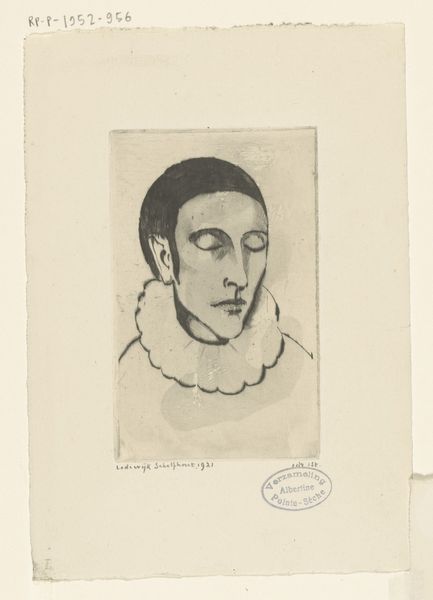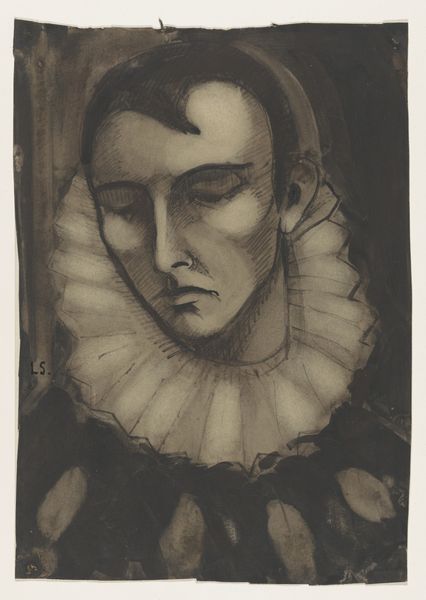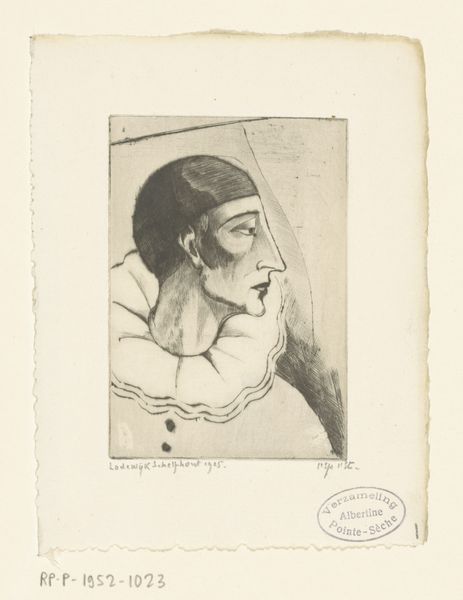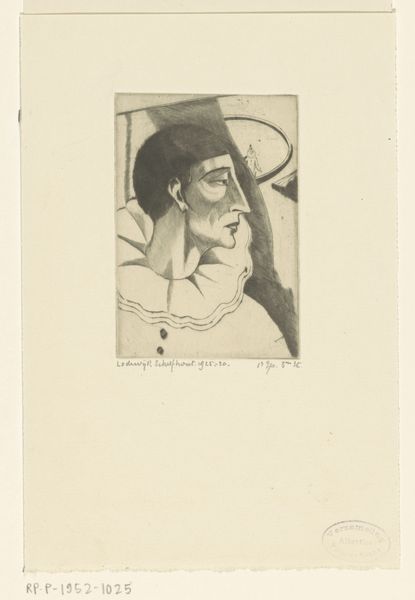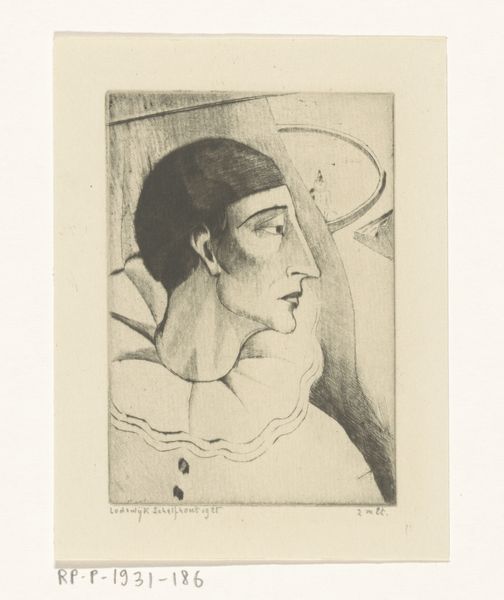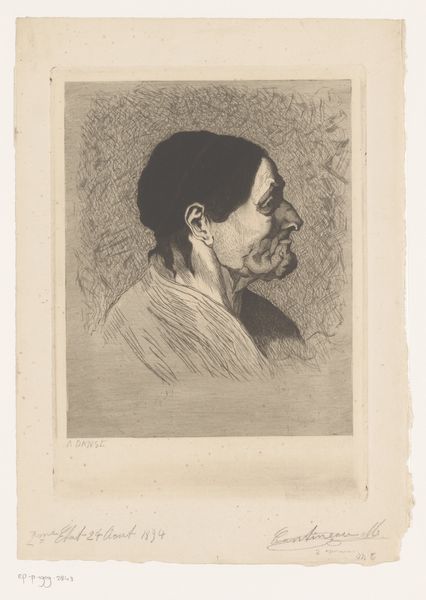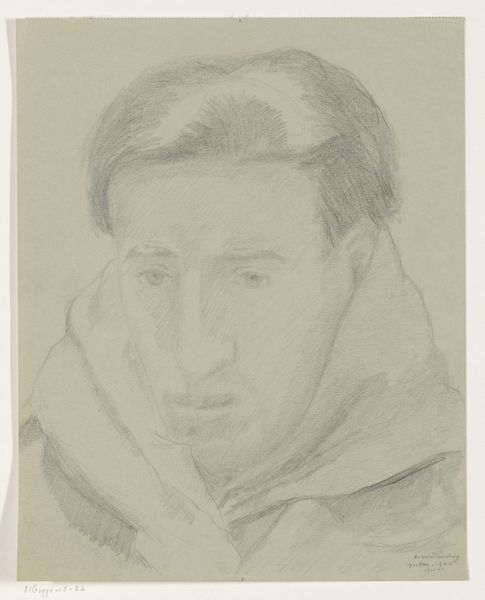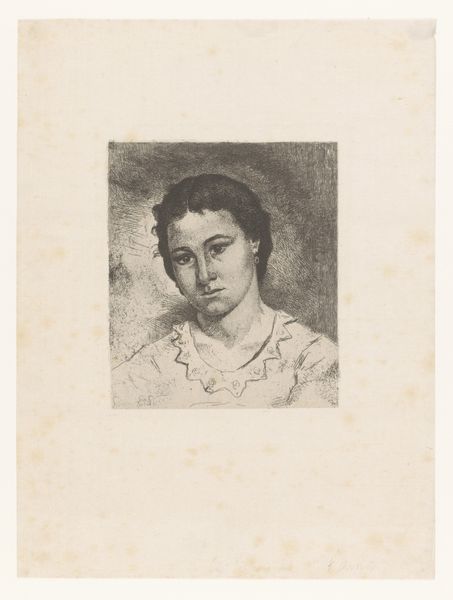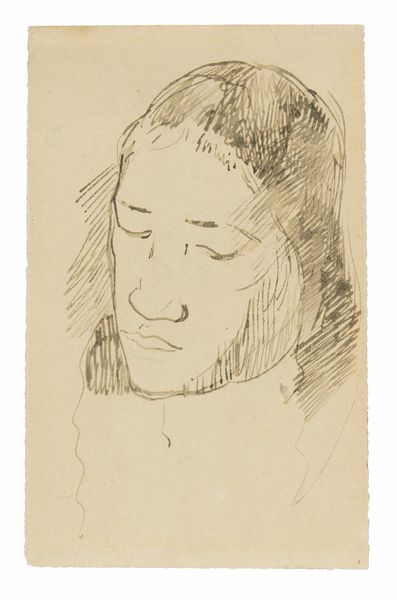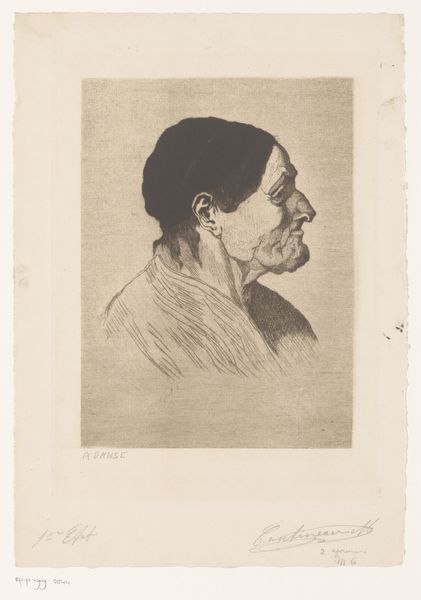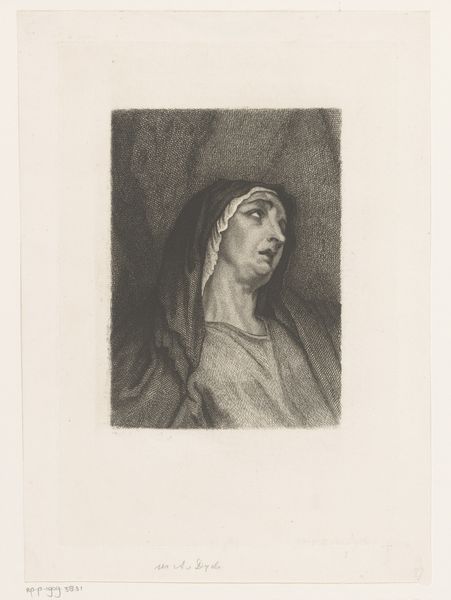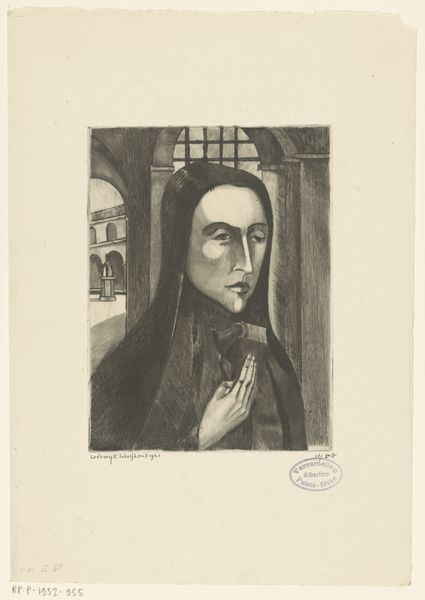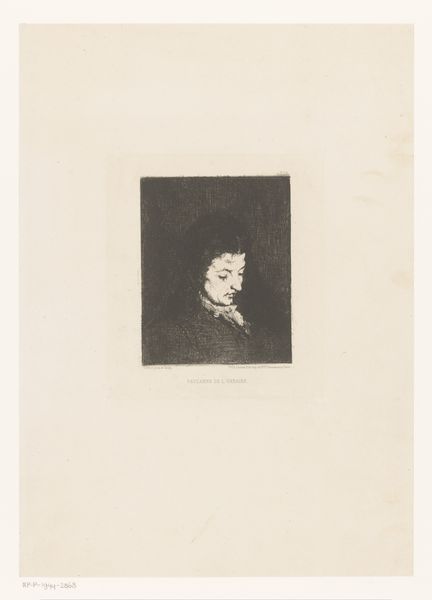
drawing, print, etching
#
portrait
#
drawing
# print
#
etching
#
pencil sketch
#
figuration
#
expressionism
Dimensions: height 123 mm, width 76 mm
Copyright: Rijks Museum: Open Domain
Curator: Here we have Lodewijk Schelfhout’s etching from 1921, titled “Pierrot III.” The print showcases the head and shoulders of a figure rendered in delicate, almost ghostly lines. What strikes you most when you first view it? Editor: The immediate impact is one of quiet contemplation. There's an air of vulnerability and melancholy about the closed eyes and subtly down-turned mouth. It feels introspective, like a soul searching for meaning. Curator: Interesting, because formally speaking, I find myself drawn to the use of line itself. Notice the stark contrast between the areas of dense hatching, which create volume and shadow, versus the flat expanses, particularly in the face and ruffled collar, which draw attention to flatness as a distinctly modernist concern. How does this technical approach reinforce the theme you’ve highlighted? Editor: It deepens it. Pierrot, traditionally a figure of sorrow and unrequited love, often played a trickster as well. The deliberate artistic choices you've mentioned heighten the sense of him as alienated. There's a rawness, particularly visible in the eyes rendered as simple dark bands, which hint at a more complex, even psychologically fraught narrative beyond just the sad clown trope. He represents artists after WWI; using such simplistic materials to explore very complicated feelings of grief and loss. Curator: Your perspective is illuminating, especially within a historical context. Looking again at the etched lines of the figure against the paper, what’s compelling is the relationship between figure and ground, and this interplay really activates the surface, drawing us into an aesthetic and sensory engagement independent of any clear social commentary. It functions as an elegant study in graphic economy. Editor: And for me, the elegance resides in its ability to speak volumes about a turbulent period, through the poignant image of an artist lost in thought, stripped bare, his conventional mask is removed. It becomes a portrait of artists using themselves as subjects. Curator: Thank you; this exercise of engaging with varied perspectives always enhances and deepens our appreciation of artwork. Editor: Absolutely, and ideally helps our audience question, as well as listen!
Comments
No comments
Be the first to comment and join the conversation on the ultimate creative platform.
